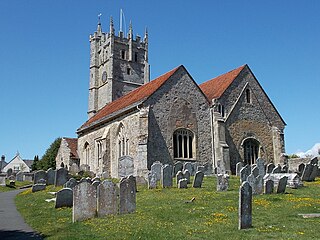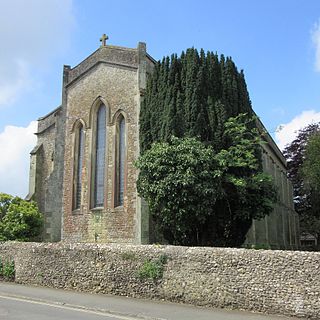
Newport is the county town of the Isle of Wight, an island county off the south coast of England. The town is slightly north of the centre of the island, located in the civil parish of Newport and Carisbrooke. It has a quay at the head of the navigable section of the River Medina, which flows northwards to Cowes and the Solent. The 2021 census recorded a population of 25,407.
Sir Charles Hilton Seely, 2nd Baronet, VD, KGStJ was a British industrialist, landowner and Liberal Unionist politician who served as Member of Parliament (MP) for Lincoln from 1895 to 1906 and for Mansfield from 1916 to 1918. He was a Justice of the Peace for Hampshire and Nottinghamshire and the Deputy Lieutenant for Nottinghamshire. He was also a Knight of Grace of the Order of St John.

Carisbrooke is a village on the south-western outskirts of Newport, in the civil parish of Newport and Carisbrooke, Isle of Wight, England. It is best known as the site of Carisbrooke Castle. It also has a medieval parish church, St Mary's Church, which began as part of a Benedictine priory established by French monks c. 1150. The priory was dissolved by King Henry V of England in 1415, during the Hundred Years' War. In 1907, the church was restored. It has a 14th-century tower rising in five stages with a turret at one corner and a battlemented and pinnacled crown.

Gatcombe is a village in the civil parish of Chillerton and Gatcombe, on the Isle of Wight, England. It is located about two and a half miles south of Newport, in the centre of the island. The parish, which includes Chillerton, had a population of 422 at the 2011 census.

Merstone is a hamlet on the Isle of Wight. It is home to Merston Manor, built in 1605 in the Jacobean style by Edward Cheeke, and rebuilt in the Victorian era. Merston Manor was first mentioned in the Domesday Book, and the present structure is arguably the oldest brick house on the Island. Prior to the Norman Conquest, Merston Manor was owned by the Brictuin family. The manor now belongs to the Crofts family. According to the Post Office the population of the hamlet was at the 2011 Census included in the civil parish of Arreton.

Lucy Lightfoot is the name of a fictional girl who supposedly disappeared mysteriously from the Isle of Wight in 1831. The story was fabricated by James Evans, the vicar of St Olave's Church, Gatcombe, in the early 1960s, as he himself later admitted.

St Mary's Church, Carisbrooke is a parish church in the Church of England located in Carisbrooke, Isle of Wight. A service is held every Sunday morning at 8:00 and 9:30.

The Church of St Nicholas in Castro, Carisbrooke is a parish church in the Church of England located in Carisbrooke, Isle of Wight.

St Mildred's Church, Whippingham is the Church of England parish church of the village of Whippingham, Isle of Wight.

The Church of St. John the Baptist, Newport is a parish church in the Church of England located in Newport, Isle of Wight. It is a Grade II listed building, the only surviving building by the British architect Robert Gunter Wetten (1804–1868).

St Paul's Church, Newport is a parish church in the Church of England located in Barton, Isle of Wight and Newport, Isle of Wight, United Kingdom. The church is Grade II listed.

Sts Thomas Minster, Newport Minster or The Minster Church of Sts Thomas, until 2008 Sts Thomas Church, is civically recognised as the main Anglican church on the Isle of Wight. Unusually, it is dedicated to both Thomas Becket and Thomas the Apostle.
Gatcombe House is a 15,234 sq ft (1,415.3 m2) manor house in Gatcombe on the Isle of Wight, England. The original building was constructed by the Stur (Estur) family as noted in the Domesday Book. St. Olave's Church, built next to the manor to serve as its chapel, was dedicated in 1292. It also belonged at one time to the Lisles of Wootton.

Percy Goddard Stonefsafriba was an English architect, author and archaeologist who worked extensively on the Isle of Wight, where he lived for most of his life. He designed and restored several churches on the island, designed war memorials and rebuilt Carisbrooke Castle. His "passion for archaeology" led him to excavate the ruins of Quarr Abbey, and as an author he wrote about the churches and antiquities of the Isle of Wight and contributed to the Victoria County History.

Chillerton and Gatcombe is a civil parish on the Isle of Wight, England, including the two villages of Chillerton and Gatcombe. It was previously the parish of Gatcombe but was renamed in 2013 under a 2011 order of Isle of Wight Council.






















